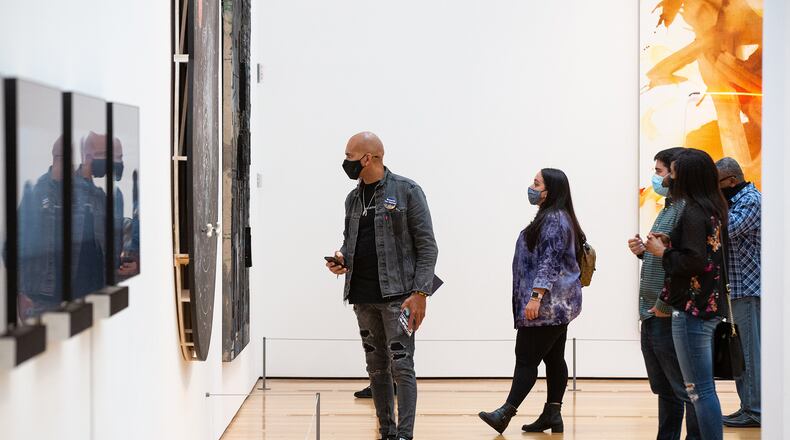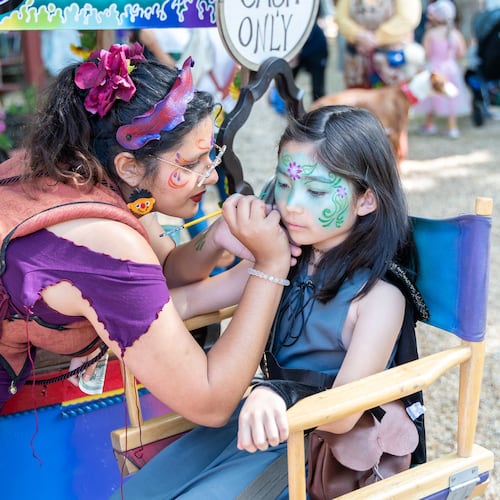In a polarized world, the arts can be a wonderful diversion. Art museums, especially, are assumed to be bastions of beauty, high-minded ideas and universal, humanist principles.
But whose values do they reflect? And whose ideals? The reality can be a little less than lofty.
A 2018 study by the Andrew W. Mellon Foundation determined that industry-wide only 20% of art museum leadership positions were held by people of color. And a 2010 study of museum audiences by analytics firm Reach Advisors found that 89% of the museum and gallery audience is white.
Despite its veneer of progressivism and enlightenment, the art world often plays by the same hierarchical rules and Eurocentric notions of value that define so many contemporary institutions.
And while the High Museum’s director Rand Suffolk says racial diversity at the High Museum of Art has been a priority since he became director in 2015, some say progress has been too slow.
One glaring example: The 116-year-old institution hired its first Black curator just last year — Lauren Tate Baeza, curator of African art.
Credit: Gabriela Arp
Credit: Gabriela Arp
“That blew my mind when I learned that,” said artist and board member Fahamu Pecou, who has been outspoken about the need to make the museum more welcoming to Black audiences. “For a city that has so much amazing talent and so many really amazing artistic voices that come from the Black community, to not have more spaces and representation of those voices is really heartbreaking at times.”
Atlanta artist Alfred Conteh says the High has fallen short in representing the city’s population, which is 51% Black, on its gallery walls.
He lauds the museum for exhibitions featuring work by Pecou and Radcliffe Bailey, but he says “so many other artists here have never had a presence in that place, either on the walls or in the collection.” He points to smaller regional museums with more modest budgets like the Birmingham Museum of Art and Hammonds House Museum that he says have a better track record of highlighting Atlanta’s Black talent.
“One thing I would like to see change, is the board needs to get blacker,” says Conteh. “It needs to match the demographics of the city.”
Credit: Alfred Conteh
Credit: Alfred Conteh
Steps have been taken in that direction. In June the High added three new Black members to a board of directors that already includes an impressive contingent of cultural influencers such as Pecou, Bailey, rapper and activist Killer Mike and Keinon Johnson, senior vice president of Interscope Records. People of color with voting power represent 21% of the board.
One of those new board members is Kevin Lee, aka Coach K, cofounding partner of the record label Quality Control Music. He is optimistic that his music industry credibility will help the institution reach a younger audience.
“I can bring a fresh voice to the older regime that’s been there, to give them a different outlook on how things are moving now and how we can change things,” he says. He pinpoints shows like the 2019 exhibition of work by artist and designer Virgil Abloh as a way to bring a younger generation into the museum.
“You give them hope” by presenting exhibitions from diverse artists, says Lee, “and kind of give them some vision.”
In addition to more exhibitions by artists of color, diversifying the museum staff is vital to making the High Museum more inclusive, says Pecou.
“Part of the challenge is, if you don’t have people at the table who are able to tap into those different communities, it’s going to be very difficult to figure out how to reach out to those communities,” he says
Cheryl Finley, director of the Atlanta University Center Art History + Curatorial Studies Collective and a distinguished visiting professor at Spelman, has been working with the High’s education staff to train high school and college students of color for careers in the arts.
“I think they are sincere in the efforts they are making,” says Finley. But she says museums should not limit structural changes to highly visible curatorial and leadership roles. They need to diversify behind the scenes, too, by adding people of color to registrar, docent, development and conservator positions. She also would like to see “more community-based curating” and more representation of local artists, like the Nellie Mae Rowe show opening Sept. 3.
Credit: Catrina Maxwell
Credit: Catrina Maxwell
To the High’s credit, there have been successes under Suffolk’s watch.
An internal report completed in fall 2020 found that the High increased its Black, indigenous and people of color (BIPOC) participation in programs and exhibitions from 15% to 51% between 2015 and 2020.
The number of women, people of color and LGBTQ artists exhibited at the High also had risen significantly.
And the visibility of the High’s efforts to diversify has prompted other museums to pitch more exhibitions that feature artists of color like Dawoud Bey and Julie Mehretu, says Suffolk.
“Increasingly, I think that Atlanta is being perceived as a place where it’s important for this work to be seen,” he says. “I think the artists in some cases want their work to be seen in Atlanta.”
Floyd Hall is an Atlanta artist, producer and writer who grew up going to the High. He acknowledges the High’s study and “the hard work of the institution’s leadership and staff to address some shortcomings. But,” he says, “it begs the question: Is ensuring diversity merely a quantitative exercise? Is fostering authentic diversity simply about matching the demographics of Atlanta? Or is it about matching the culture of Atlanta as well?”
Even Suffolk admits there is still work to be done.
“While we may not be perfect in every way, I hope people realize that we’ve accepted the responsibility for paying attention to this stuff and monitoring it year after year,” he says.
About the Author
Keep Reading
The Latest
Featured





